Technology
AI-powered brain fitness protocols: how technology is transforming cognitive enhancement
The human brain is constantly adapting. Every skill learned and every habit formed reshapes neural pathways, strengthening connections and improving efficiency. This process, known as neuroplasticity, allows the brain to evolve in response to new challenges, enhancing memory, focus, and problem-solving. Advances in artificial intelligence and wearable technology are now making it possible to optimize […]

The human brain is constantly adapting. Every skill learned and every habit formed reshapes neural pathways, strengthening connections and improving efficiency. This process, known as neuroplasticity, allows the brain to evolve in response to new challenges, enhancing memory, focus, and problem-solving. Advances in artificial intelligence and wearable technology are now making it possible to optimize this process, offering new opportunities for cognitive enhancement.
Traditional brain training apps have long relied on repetitive cognitive exercises, but research shows that cognitive function is shaped by more than mental workouts. Factors like sleep, nutrition, exercise, and stress management play a critical role in brain health. As a result, next-generation platforms are moving beyond conventional models, integrating neuroscience, AI, and biometric tracking to provide a more comprehensive approach to brain fitness.
The future of brain optimization
Artificial intelligence is at the core of this transformation.
BRAIN.ONE, a brain fitness platform, leverages AI and wearable technology to deliver highly personalized cognitive enhancement strategies. Recognizing that brain optimization extends beyond traditional memory games and logic puzzles, it integrates data from multiple sources like wearables, blood markers, and user assessments. Unlike many brain training apps, BRAIN.ONE enables users to create, import, and share microhabit-based health routines. These small, repeatable behaviors fit seamlessly into daily life. The platform continuously refines its recommendations based on biometric feedback, delivering a tailored approach that evolves with each user’s progress.
“Artificial intelligence and health protocols are revolutionizing cognitive enhancement by making brain fitness more adaptive, personalized, and data-driven. By leveraging real-time biometric insights and AI-powered analysis, we can create precision-tailored programs beyond traditional exercises—optimizing brain health through a holistic, neuroscience-backed approach. The future of brain fitness lies in integrating AI with protocols, incremental microhabits, and lifestyle factors like sleep, stress, and nutrition to unlock peak cognitive performance.” — Thoryn Stephens, BRAIN.ONE, CEO
By analyzing personal health data, AI generates customized training programs that address individual cognitive strengths and weaknesses. Instead of a standardized model, AI adapts recommendations in real time, making brain training more precise and effective.
Technological innovation has made it possible to take this further by integrating wearable data to provide continuous insights into cognitive and physical performance. Real-time biometric tracking assesses how factors like heart rate variability, sleep quality, and stress levels influence brain function. This creates a holistic approach to brain health, recognizing that cognitive performance is interconnected with overall well-being.
Microhabits and sustainable cognitive growth
Neuroscientific research suggests that small, repeatable behaviors are key to long-term cognitive improvement. AI-driven platforms leverage this principle by encouraging users to integrate simple yet effective habits into daily routines. Unlike intensive cognitive exercises that may be difficult to sustain, microhabits allow for sustainable brain fitness with minimal effort.
Beyond individual optimization, AI-powered platforms are fostering community-driven brain training. Users can share their personal cognitive enhancement protocols and learn from experts, coaches, and peers. Some platforms even allow users to monetize their training strategies, creating a growing marketplace of best practices in brain health.
This shift moves brain fitness beyond pre-built, static programs and toward a collaborative, user-driven model. By exchanging methods and insights, users gain access to a continuously evolving network of knowledge, helping individuals stay engaged with the latest advancements in cognitive science.

AI-powered insights and evidence-based training
One of the biggest challenges in brain fitness has been separating science-backed methods from exaggerated claims. Many cognitive enhancement apps promote results without research validation. Leading platforms are addressing this issue by integrating AI-powered research engines that analyze scientific literature in real-time.
“By analyzing individual health data, we can design adaptive, evidence-based protocols and programs that evolve with each person. This transforms brain health from a static practice into a living, dynamic system—integrating neuroscience, biometric feedback, and collective intelligence. It’s not just optimization; it’s a redefinition of what’s possible for the human mind. This is the future of cognitive performance.” — Thoryn Stephens
By continuously evaluating new studies and trends, AI provides users with evidence-based recommendations, ensuring that cognitive training strategies align with scientifically validated methods rather than pseudoscience. As transparency becomes a priority, platforms prioritizing scientific validation will set the standard for future brain training models.
AI, wearables, and neuroscience
As AI and wearable technology continue to evolve, real-time brain optimization is becoming increasingly viable. Some platforms are integrating neurofeedback, brainwave monitoring, and non-invasive brain stimulation, unlocking new possibilities for enhancing focus, creativity, and mental resilience.
AI-driven biometric feedback loops are now adjusting training protocols dynamically, ensuring a continuously evolving cognitive enhancement system. Rather than relying on fixed training programs, users benefit from a system that learns and adapts in real time.
A new era in brain training
The fusion of AI and neuroscience is shaping the future of brain training. As AI-powered platforms refine their models, brain fitness will become more precise, adaptive, and seamlessly integrated into daily life. For professionals, students, and individuals seeking to improve cognitive performance, AI-powered brain training may soon become an essential tool.
Healthcare disclaimer:
This article is for informational purposes only and does not substitute for professional medical advice. If you are seeking medical advice, diagnosis or treatment, please consult a medical professional or healthcare provider.
VentureBeat newsroom and editorial staff were not involved in the creation of this content.
Technology
Building New Gym Habits And Lasting Confidence
Igor Epshteyn is the CEO and President of Coherent Solutions. getty Does your fitness app help users quiet self-doubt and build habits that turn fear into confidence? During my fitness journey, I’ve experimented with various platforms and apps. Some offered comprehensive health management, while others focused on nutrition and habit tracking. These tools taught me […]
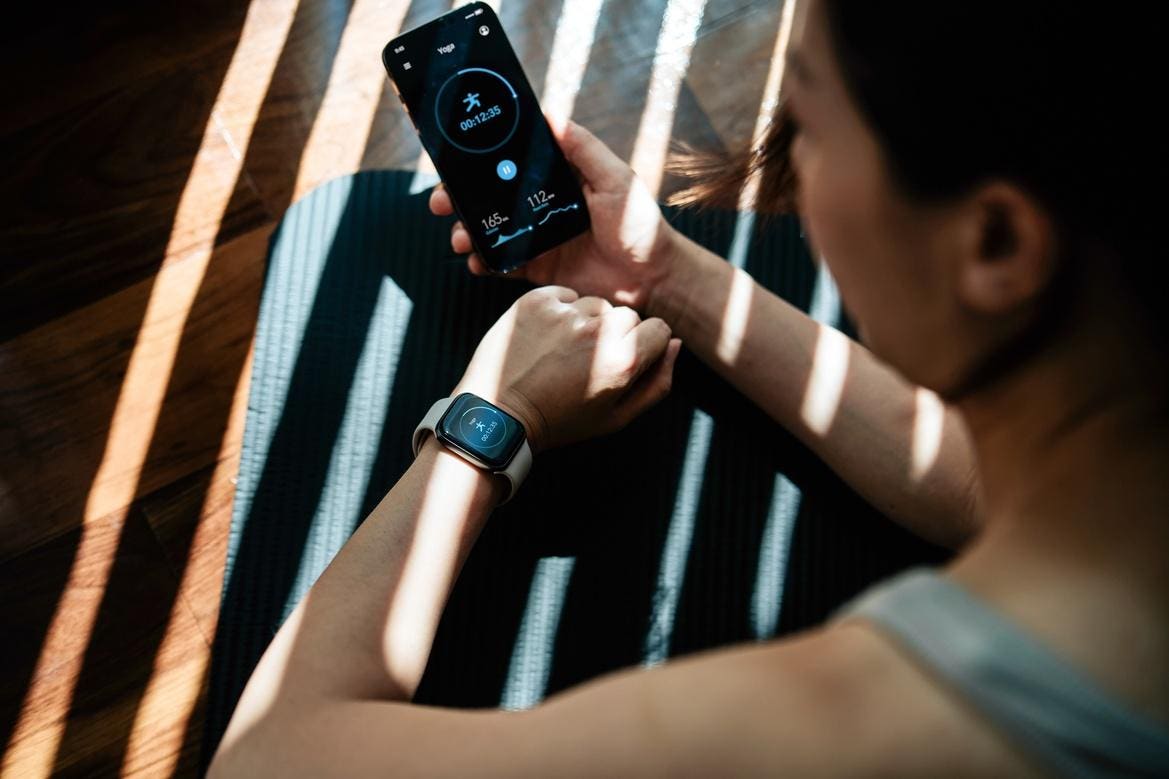
Igor Epshteyn is the CEO and President of Coherent Solutions.
Does your fitness app help users quiet self-doubt and build habits that turn fear into confidence?
During my fitness journey, I’ve experimented with various platforms and apps. Some offered comprehensive health management, while others focused on nutrition and habit tracking.
These tools taught me more than just how to make progress in fitness. As the leader of a technology company that’s built multiple fitness apps and AI-driven tools, I’ve seen firsthand what works and what doesn’t for users in the age of AI.
Innovations start when providers understand what users genuinely expect and design AI tools to exceed their expectations. Testing fitness routines, I was thinking like a provider, and the trend is clear: Modern apps and systems that use advanced AI are more successful than ever at motivating users, building lasting gym habits and instilling self-confidence.
Building Training Partners Instead Of Trackers
In the early 2010s, fitness apps started quantifying health metrics, serving as calorie and nutrition counters. Several years later, Planet Fitness launched its first mobile app, boosting its members’ motivation. Users booked training sessions and accessed basic workout tracking.
However, early tools lacked vital personalized insights and deeper guidance, unlike professional coaches or nutritionists. When the novelty wore off, user satisfaction declined due to limited personalization and motivational support.
When AI came, basic tracking began evolving toward personalized coaching experiences. Passive data collection matured into intelligent fitness guidance via wearables like Apple Watch and Fitbit. We worked with Planet Fitness as it implemented AI to transform its app through dynamic analyses, immediate feedback and personalized workout regimens.
The Peloton Guide is another example, as it employed machine learning to monitor movements, accurately count repetitions and offer real-time corrections. The level of personalization and gamification encouraged users to have independent yet engaging training.
Personalization That Keeps The Icon On The Home Screen
Users can often lose motivation when they’re treated like one-size-fits-all profiles. Take the 21-day habit myth. Research from the European Journal of Social Psychology shows habit formation can take anywhere from 18 to 254 days, depending on the person, the complexity of a habit and consistency.
Real progress comes from steady personal growth, not Instagram-worthy milestones or being compared to others. The RP Strength app uses algorithms to track rep velocity, fatigue levels and consistency. It then evaluates performance in real time. The app learns users’ body rhythms and adjusts the intensity of training and rest intervals accordingly. Users receive personalized workout plans. Each session safely pushes them just beyond comfort.
By offering AI-driven in-app personalization, providers can help users remove the guesswork and adapt with every rep and rest day.
Helping Beginners Start A Routine
Many beginners struggle to establish lasting fitness habits and stay consistent. AI-driven apps can help overcome this barrier with data-driven and structured routines. Fitbit and smart wearables alike alert users when it’s time to train, rest or adjust training intensity based on recovery data.
Offering gamified features and micro-goals can make workouts feel like video game level-ups. Users can compare current metrics to past performance and see progress, giving them a genuine sense of achievement and keeping them motivated and engaged.
Creating Safer Training For The Experienced
Experienced athletes push harder, which means a higher risk of injuries or burnout. Offering proper in-app guidance can prevent setbacks and give users a sense of safety.
To analyze movements and correct techniques in real time, the Asensei AI trainer uses motion capture, while the Zenia yoga app uses computer vision. Sparta Science takes it further, analyzing movement patterns to predict potential injuries among professional athletes.
Solving The Confidence Gap
A 2022 Mintel survey found that 78% of American respondents exercised to improve mental and emotional health. Ironically, their first fitness attempts often provoke anxiety and self-doubt.
Well-designed AI apps can help users solve this paradox. By offering structured workouts, tailored guidance and human-like feedback, beginners can feel more confident. They get the needed support to set realistic goals, make steady progress and receive instant reassurance.
Building Trust Through Data Security
Users trust fitness apps with their health and biometric data. That trust is fragile and often misplaced, so providers should be transparent about how they handle user data. Data breaches and unauthorized use (see the Strava location leak in 2018) make it clear that providers should prioritize ethics, transparency and strong security protocols to protect user data.
A January 2025 Surfshark survey (via TechRadar) found that 4 in 5 fitness apps still share user data with third parties. Leading platforms adopt privacy-by-design principles, enforcing stricter compliance and limiting data handover to what’s necessary. Whether these measures can be trusted long-term remains up for debate.
Recognizing AI’s Limitations
Users get garbage advice when providers rely on garbage data (like a wonky wearable). When users lean too heavily on apps, they might miss the body’s subtle signals, which a human coach would catch.
Premium subscription costs also lock out many users. If AI is to truly democratize fitness, providers must design with accessibility in mind.
The most effective approach still lies in balancing AI with human expertise. Emotions, empathy and personalized motivation remain out of reach for AI, at least for now.
The Future Is Built Around Users
Fitness apps do more than build strength, as they help users build confidence and take charge of their health. AI can support that when providers build apps focusing on adaptive guidance, clear ethics and real human insights. For tech leaders, the task is to build apps that feel like a gym buddy: understand, motivate and keep showing up even when users don’t feel like training.
Forbes Technology Council is an invitation-only community for world-class CIOs, CTOs and technology executives. Do I qualify?
Technology
Sporting Goods Market Size to Surpass US$ 1428.45 Mn by 2031 |
Sporting Goods Market The sporting goods market is poised for significant growth in the coming years, with its size expected to rise from US$786.47 million in 2024 to US$1428.45 million by 2031. This remarkable growth is anticipated to occur at a compound annual growth rate (CAGR) of 8.9% during the forecast period from 2024 to […]


Sporting Goods Market
The sporting goods market is poised for significant growth in the coming years, with its size expected to rise from US$786.47 million in 2024 to US$1428.45 million by 2031. This remarkable growth is anticipated to occur at a compound annual growth rate (CAGR) of 8.9% during the forecast period from 2024 to 2031. As the global sporting goods industry evolves, it reflects trends in consumer preferences, technological advancements, and the increasing importance of health and fitness. This article delves into the market’s dynamics, key drivers, challenges, regional insights, and forecasts for the coming decade.

The sporting goods market is a critical part of the global economy, encompassing a wide array of products and services designed for sports and fitness activities. This includes equipment, apparel, footwear, and accessories, catering to both professional athletes and everyday fitness enthusiasts. Market dynamics are shaped by several factors, including the growing awareness of physical fitness, the increasing popularity of outdoor and adventure sports, and the adoption of technology in sports gear and wearables.
Elevate your business strategy with comprehensive market data. Request a sample report now: https://www.persistencemarketresearch.com/samples/33537
The market’s strong growth is driven by a shift in consumer behavior towards more active and healthier lifestyles. As people increasingly prioritize fitness, the demand for sporting goods such as gym equipment, athletic footwear, and activewear has surged. Additionally, the rise of digital fitness tools and smart sporting goods-such as smartwatches, fitness trackers, and connected fitness machines-has propelled the market forward. As a result, the market is expected to grow at a robust pace, reaching a value of US$1428.45 million by 2031, propelled by these evolving consumer trends.
Key growth drivers for this market include the rising popularity of sports activities, increasing disposable income in emerging economies, and the expanding demand for fitness equipment and accessories. The leading segment of the market is expected to be athletic footwear, driven by consumer interest in both functionality and fashion. Geographically, North America is expected to dominate the market due to its well-established sporting culture and increasing adoption of fitness trends.

➤ The sporting goods market size is expected to grow from US$786.47 million in 2024 to US$1428.45 million by 2031.
➤ The market is projected to grow at a CAGR of 8.9% during the forecast period (2024-2031).
➤ Athletic footwear is expected to lead the market in terms of product type.
➤ North America is projected to be the largest regional market for sporting goods.
➤ Increasing interest in fitness and outdoor activities is a primary driver of market growth.
➤ The market is expected to benefit from technological advancements in sporting equipment and wearables.

The sporting goods market is diverse, and its segmentation varies across product types, end-users, and regional preferences. From a product standpoint, the market is segmented into categories such as athletic footwear, apparel, outdoor gear, and fitness equipment. Among these, athletic footwear is anticipated to dominate the market, driven by rising consumer demand for stylish yet functional footwear for various sports, fitness, and leisure activities. Fitness equipment, including gym machines and wearables, is also expected to see significant growth, spurred by the increasing trend of home fitness and personalized health tracking.
End-user segmentation reveals that the market caters to both professional athletes and the general population. While professional athletes continue to drive demand for high-performance gear, the general public, particularly fitness enthusiasts, has become the largest consumer group for sporting goods. This trend is further amplified by the rise of health-conscious consumers who prioritize fitness in their daily routines, making sporting goods an essential part of their lifestyles.

The regional distribution of the sporting goods market reflects varying levels of demand based on cultural preferences, economic factors, and access to sporting infrastructure. North America currently holds the largest share of the market, attributed to the region’s strong sports culture, widespread participation in fitness activities, and high disposable incomes. The U.S. in particular is home to a robust sporting goods retail industry and has seen a growing inclination toward fitness-focused lifestyles.
In contrast, the Asia Pacific region is anticipated to witness the highest growth rate during the forecast period. This growth is primarily driven by the increasing urbanization, rising disposable income, and a growing middle class in countries such as China, India, and Japan. These countries have seen a surge in the popularity of sports and fitness activities, contributing to the growing demand for sporting goods. As more consumers engage in fitness and recreational sports, the region is expected to become a critical market for the global sporting goods industry.

Several factors contribute to the continued growth of the sporting goods market. The growing emphasis on fitness and well-being has become a key driver, with consumers increasingly investing in sporting products that support an active lifestyle. The rise of fitness trends, such as home gyms, personal training, and wearable fitness trackers, has expanded the market’s reach beyond traditional sports gear.
Another critical driver is the increase in disposable income, particularly in emerging economies. As people in developing regions gain more financial stability, they are more likely to invest in quality sporting goods, including outdoor equipment, fitness apparel, and footwear. This increased purchasing power is expected to stimulate demand in markets such as Asia Pacific and Latin America.

Despite its growth prospects, the sporting goods market faces several challenges. One major restraint is the high competition among leading brands, which results in price wars that may squeeze profit margins for manufacturers and retailers. Additionally, the market is vulnerable to economic downturns, as consumer spending on non-essential goods, such as sporting equipment, tends to decline during periods of economic uncertainty.
Furthermore, the increasing shift towards digital sports and gaming technologies may divert consumer attention away from traditional sporting goods. As more individuals embrace esports and virtual fitness experiences, there is a risk that the physical sporting goods market could see reduced demand from some consumer segments.

The market presents numerous growth opportunities, particularly through innovations in product offerings. The integration of smart technology in sportswear, such as fitness trackers, smart shoes, and connected gear, offers substantial growth potential. These products appeal to the growing segment of tech-savvy consumers who prioritize both performance and connectivity.
Additionally, sustainability trends present an opportunity for brands to differentiate themselves. Environmentally conscious consumers are increasingly seeking sporting goods made from sustainable materials and those that adhere to eco-friendly production processes. Manufacturers who invest in eco-conscious product lines are likely to gain a competitive advantage in the market.

➤ How Big is the Sporting Goods Market?
➤ Who are the Key Players in the Global Sporting Goods Market?
➤ What is the Projected Growth Rate of the Sporting Goods Market?
➤ What is the Market Forecast for Sporting Goods in 2032?
➤ Which Region is Estimated to Dominate the Sporting Goods Industry through the Forecast Period?
Do You Have Any Query Or Specific Requirement? Request Customization of Report: https://www.persistencemarketresearch.com/request-customization/33537

The sporting goods market is highly competitive, with several key players driving innovation and product development. Leading companies in the market include:
✦ Nike, Inc.
✦ Adidas AG
✦ Puma SE
✦ Under Armour, Inc.
✦ Decathlon S.A.
✦ The North Face
✦ New Balance Athletics, Inc.
These companies are not only prominent in terms of market share but are also at the forefront of sustainability efforts and technological innovations within the sporting goods industry.
■ Recent Developments:
■ In 2024, Nike launched a new line of environmentally friendly footwear made from sustainable materials, reinforcing its commitment to sustainability.
■ Adidas introduced a next-gen wearable technology that combines fitness tracking with real-time performance feedback for athletes.
The sporting goods market is set to experience significant growth, driven by increasing health awareness, technological advancements, and evolving consumer preferences. Understanding the trends and dynamics in the market will help stakeholders navigate the opportunities and challenges ahead.
Contact Us:
Persistence Market Research
G04 Golden Mile House, Clayponds Lane
Brentford, London, TW8 0GU UK
USA Phone: +1 646-878-6329
UK Phone: +44 203-837-5656
Email: sales@persistencemarketresearch.com
Web: https://www.persistencemarketresearch.com
About Persistence Market Research:
At Persistence Market Research, we specialize in creating research studies that serve as strategic tools for driving business growth. Established as a proprietary firm in 2012, we have evolved into a registered company in England and Wales in 2023 under the name Persistence Research & Consultancy Services Ltd. With a solid foundation, we have completed over 3600 custom and syndicate market research projects, and delivered more than 2700 projects for other leading market research companies’ clients.
Our approach combines traditional market research methods with modern tools to offer comprehensive research solutions. With a decade of experience, we pride ourselves on deriving actionable insights from data to help businesses stay ahead of the competition. Our client base spans multinational corporations, leading consulting firms, investment funds, and government departments. A significant portion of our sales comes from repeat clients, a testament to the value and trust we’ve built over the years.
This release was published on openPR.
Technology
Dream Sports To Invest $50 Mn In Cricbuzz & Willow TV
SUMMARY As a part of this investment, Dream Sports will also pick up a minority stake to deepen its play in the cricket content and broadcast ecosystem The move aims to deliver interactive and AI-powered fan experiences globally, while also exploring product-level integrations across live stats, personalised content, commerce experiences, and interactive match streams Earlier […]

As a part of this investment, Dream Sports will also pick up a minority stake to deepen its play in the cricket content and broadcast ecosystem
The move aims to deliver interactive and AI-powered fan experiences globally, while also exploring product-level integrations across live stats, personalised content, commerce experiences, and interactive match streams
Earlier in March, the company shifted its domicile from the US to India via a reverse merger, using Indian government’s fast-track route for cross-border mergers
Dream Sports, the parent entity of fantasy gaming platform Dream11
On the back of this investment, Dream Sports will also pick up a minority stake to deepen its play in the cricket content and broadcast ecosystem.
The move aims to deliver interactive and AI-powered fan experiences globally, while also exploring product-level integrations across live stats, personalised content, commerce experiences, and interactive match streams.
Cricbuzz is a cricket news and information website, claiming to have over 185 Mn monthly users. Willow TV, on the other hand, is a cricket broadcaster that streams over 1,500 matches annually across the US, Canada, and expanding markets such as the Middle East and Southeast Asia.
Dream Sports’s cofounder and CEO Harsh Jain said, “With this investment, all cricket fans can expect much more fan engagement, interactive streams, and integrated commerce experiences that will bring them closer to the action and to each other.”
Avendus Capital acted as the exclusive financial advisor for the deal.
This move comes as Dream Sports continues to expand its global footprint. Last week, the company joined the ownership group of English football club Salford City FC, part of a consortium led by football legends David Beckham and Gary Neville, along with business leaders Declan Kelly and Lord Mervyn Davies.
Besides Dream11, Dream Sports also operates FanCode, a digital sports content and commerce platform, and DreamSetGo, which offers curated sports travel experiences.
Dream Sports’ India Gameplay
Earlier in March, the company shifted its domicile from the US to India via a reverse merger, becoming one of the first new-age firms to utilise the Indian government’s fast-track route for cross-border mergers.
This “reverse flipping” trend aligns with a broader movement among Indian startups such as PhonePe, Groww, Zepto, Flipkart, and Razorpay, which are relocating their domiciles to India in eyeing public listings. However, in its explanatory statement filed with the MCA for this domicile shift, Dream Play didn’t disclose any plans for a public listing yet.
Back in 2021, reports suggested that Dream Sports was eyeing a $1.5 Bn US IPO by 2022, a plan that ultimately did not materialise.
More recently, another real money gaming startup, Zupee’s cofounder, told Inc42 that despite the ongoing startup IPO boom, it is unlikely that a gaming company would go for a public listing before there is clarity on regulations.
The company continues to capitalise on the IPL season. This year, it has launched a celebrity campaign featuring actors Aamir Khan and Ranbir Kapoor, along with top cricketers like Rohit Sharma, Hardik Pandya, KL Rahul, Jasprit Bumrah, Suryakumar Yadav, Rishabh Pant, and R Ashwin.
During IPL 2024, Dream Sports added 1.1 Mn users on the very first day and recorded 15 Mn concurrent users, cofounder Harsh Jain said on X.
Founded in 2008 by Jain and Bhavit Sheth, Dream Sports’s Dream11 is a real-money gaming (RMG) platform that enables users to create virtual teams based on real players and win cash prizes based on their on-field performance.
However, like many RMG platforms, Dream11 have been impacted by the imposition of 28% GST on the full bet value. In October 2023, the DGGI issued the company a GST notice worth INR 28,000 Cr, with total claims reportedly touching INR 40,000 Cr.
More recently, the government reiterated to the Supreme Court that any online game with monetary stakes, regardless of whether it’s a game of skill or chance, should be taxed as gambling under the GST regime at a 28% rate.
While its FY24 numbers are yet to be disclosed, Dream Sports reported a 32% rise in net profit in FY23 to INR 187.8 Cr, with operating revenue climbing 66% to INR 6,384.5 Cr.
Technology
The Suunto Run is built for the Strava generation
When you buy through links on our articles, Future and its syndication partners may earn a commission. Credit: Suunto Running has changed, and Suunto knows it. Once seen as the preserve of club athletes and endurance obsessives, running today is as much about connection, self-expression, and community as it is about competition. Suunto’s new Run […]
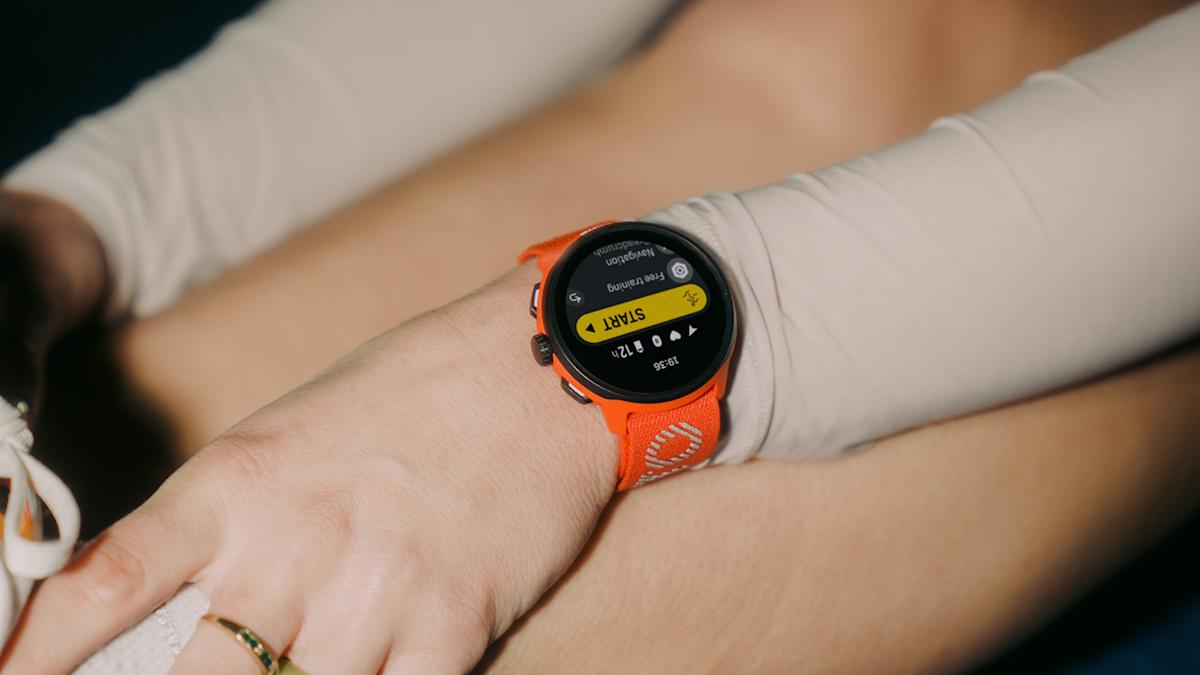
When you buy through links on our articles, Future and its syndication partners may earn a commission.

Credit: Suunto
Running has changed, and Suunto knows it. Once seen as the preserve of club athletes and endurance obsessives, running today is as much about connection, self-expression, and community as it is about competition.
Suunto’s new Run watch is made for this moment: light, simple, smart, and built with the Strava generation in mind.
The new running watch strips things back to what runners actually use, while still packing in smart tools to elevate every run.
It ditches ultra-adventurer frills like offline maps and instead focuses on what matters when you lace up: pace, motivation, recovery, and freedom from your phone.
At just 36 grams, it’s Suunto’s lightest watch yet. Add a 1.32″ AMOLED screen and a refreshed UI, and you get a performance wearable that’s friendly to new runners and satisfying to seasoned racers.

Credit: Suunto
Add built-in music storage, 20-hour dual-band GPS tracking, and full Bluetooth workout headphone compatibility, and you’ve got a device that genuinely lets you leave your phone at home.
“Today, the internet, data sharing, and wearable sports technology enable new forms of community, connection, competition, and self-knowledge,” says social scientist Dr. Neil Baxter, who consulted on the project. “Running has become an enriched part of modern culture.”
Built to motivate, not just measure
That enrichment is reflected in the data, too. The Suunto app provides post-run analysis and recovery guidance and syncs to over 300 third-party platforms, including Strava, TrainingPeaks, and Komoot.
The Run also provides Training Load and heart rate recovery stats, as well as a suite of recovery tools to help you train smarter, not harder.
Suunto Run also supports 34 sports beyond running (from strength to cycling to yoga), but make no mistake: this is a runner’s watch.
The brand added a track mode, which we’ve seen cropping up in running-forward wearables more and more in recent years.
In a world of do-everything multisport monsters, the Suunto Run is refreshingly specific. It’s not trying to climb Everest. It just wants to help you crush your next 5K, beat your best time on that hill segment, or keep your run streak alive.
The Suunto Run sells for a meagre £199 in the UK and €249 in Europe – US and AU prices TBC. It will be available to buy in the EMEA region from 3 June 2025.
For more info, head over to Suunto.
Technology
NFL will measure first downs with Hawk-Eye with after Sony’s tech agreement
The NFL will use Hawk-Eye technology to measure the first downs in a game, replacing the chain measurements that have become slightly outdated considering the available tech nowadays. The Hawk-Eye tech will be provided by Sony. Sony have partnered with just about every major sport in the world to innovate by using their advanced technology […]
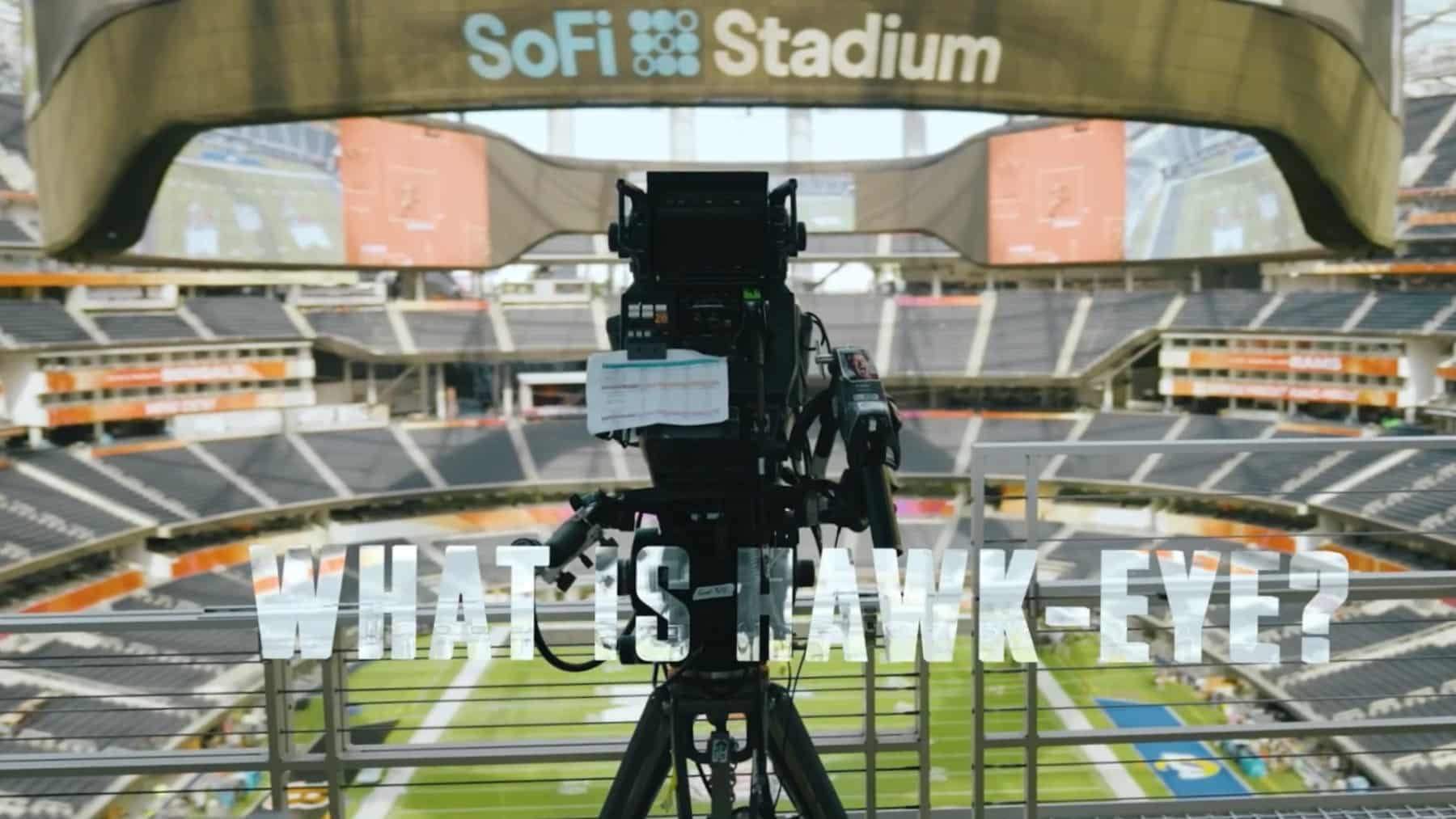
The NFL will use Hawk-Eye technology to measure the first downs in a game, replacing the chain measurements that have become slightly outdated considering the available tech nowadays. The Hawk-Eye tech will be provided by Sony. Sony have partnered with just about every major sport in the world to innovate by using their advanced technology in real time to assist the officiating. The NFL has an established relationship with Sony since 2021 when they adopted the SMART system to combine video feeds from all of the NFL’s broadcast partners in one place. Now they have taken it a step further.
What kind of changes will the NFL implement for the future of the sport?
The NFL is evolving. To everyone’s benefit, the league has considered the ever changing reality of modern day life. The pace and innovations happening in the tech sector daily is unlike anything in history. Sony has been on the forefront of that innovation for generations now. One aspect of their business model that has served the sporting world well is their cameras.
When we consider the range of products that Sony are leading the markets with, we can understand the dominance they have in the sporting world. Sony started producing cameras in the 80’s and since then they have established themselves as a serious competitor in the camera arena. The NFL have been using their cameras in the SMART(Synchronized Multi-Angle Replay Technology) since 2021.
Sony’s incredible 8k cameras have enabled them to dominate the sport sector as they have partnerships with with 23 of the top 25 global sports leagues. Their cameras are used in soccer, tennis Grand Slams, cricket major tournaments and the Rugby World Cup. The sporting world has taken advantage of the advancements in camera technology to assist with the officiating process.
How will the NFL use Sony’s camera’s to assist the officials?
The change comes in the measuring of the first downs. The chain crew have become an icon of the game of football. The tension when the chain crew runs onto the field to measure would have millions of fans on the edge of their seats. That process will now be handled by the new Sony system specifically designed to measure the distance between the ball and first down.
The chain crew will remain on the field in a secondary capacity while the officials make use of the new Sony system being controlled from the NFL’s Art McNally GameDay Central Officiating Center (AMGC) in New York. So the adoption is a seamless and smooth transition that will benefit the sport tremendously. As with other sports, the game of football is taking full advantage of the tech available to them.
After this years annual draft and the drama that it inevitably brings, the NFL and its fans are ready to start the new season. And this year will be the first season to use the new Sony system after conclusive testing took place last year to confirm the technology’s viability. Those tests were obviously successful as the league claims measurements could be up to 60% faster this year.
What will the 2025 season have in store for the NFL and its fans across the world?
The discussion topic right now in the halls of the NFL is all the rookies and their potential. The NFL is evolving along with modern day society. The international expansion has brought a legion of fans into the sport. The standard of officiating in international sport has been improving with the use of these types of systems. Improving fairness and encouraging engagement from the fans. Long gone are the days when fans would debate over a call that changed the outcome of a game due to a mistake on the part of the officials.
Technology
Real-life companies pump up promotions around fictional team in new ‘F1′ movie
The real-life companies that will be sponsors in the fictional F1 movie are preparing for what they hope will be a boon for their businesses as the premiere of the forthcoming film draws closer. The movie, simply called “F1,” will hit theaters internationally June 25 and in North America on June 27. Since the plot […]
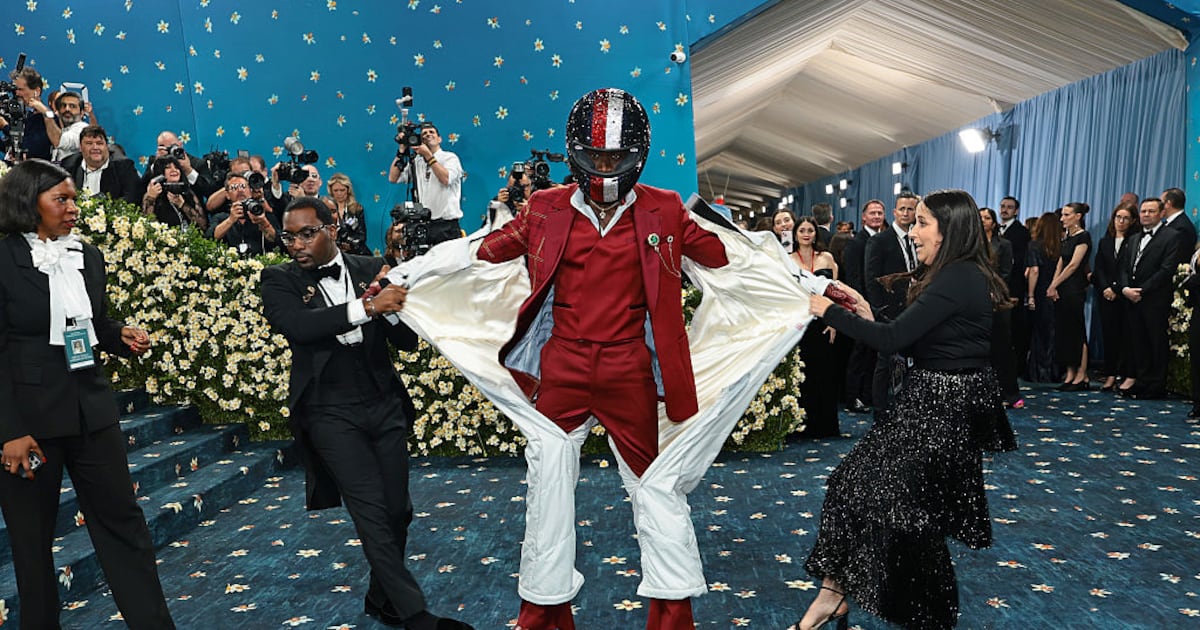
The real-life companies that will be sponsors in the fictional F1 movie are preparing for what they hope will be a boon for their businesses as the premiere of the forthcoming film draws closer. The movie, simply called “F1,” will hit theaters internationally June 25 and in North America on June 27. Since the plot revolves around an F1 team, Apple Original Films worked to land real companies that would provide their brand to the film as sponsors of the fictional team to give it an extra bit of authenticity. Sponsors of the fictional APX (pronounced Apex) GP team include Mercedes-Benz, EA Sports, Expensify, SharkNinja, Geico, IWC and Tommy Hilfiger. Expensify, the expense tracking software company, called out the sponsorship during its Q1 earnings report last week as “possibly one of the best brand placement opportunities ever.” Sign-ups to Expensify quadrupled for a few hours last week after actor Damson Idris wore a firesuit, with Expensify’s logo prominently featured, to the Met Gala as part of a stunt with Tommy Hilfiger, according to CEO David Barrett. Barrett added in a note to investors that “this gives us incredible exposure on a global basis …. Accordingly, we are battening down the hatches in preparation for what we hope will be a wave of new leads that puts our servers, sales team, and customer success to the test.”
WAITING FOR IMPACT: S.F.-based Expensify said it has been making payments on the sponsorship “for a while,” but that it has yet to record them in earnings, so the cost remains unknown. The impact from the sponsorship will likely be felt in Q3 of this year. Expensify will record the expense the day the movie comes out, according to a transcript of what company executives said during the Q1 earnings call last week. In the movie, both road cars and the race cars driven are Mercedes, and the German carmaker also provided the safety car that is used in filming. To commemorate the movie, Mercedes announced during F1 Miami race weekend earlier this month that it will sell a limited-edition AMG GT63 APXGP Edition road car. The company is making only 52 of the 577-horsepower cars, which Car And Driver magazine expects to sell for more than $191,550, the starting price of a normal GT63. The car has gold accents to match the fictional team’s colors, and the floor mats are embroidered with the lettering “APXGP.” The center console has a badge that notes which of the 52 it is. On Mercedes-Benz USA’s website, the company has a special page for the car, along with a link to buy similarly modeled vehicles.
AS SEEN IN ‘F1′: For EA Sports, it is naturally using the movie to promote the next edition of its officially licensed F1 video game. The company says fans who pre-ordered the “F1 25” game’s “Iconic Edition” by a certain period will get access to special gameplay chapters inspired around the movie. Meanwhile, Tommy Hilfiger’s stunt with Idris at the Met Gala drew attention to the film and went viral on social media, with the company saying it was a “moment that fused high fashion with cinematic glamour.” Along with the APXGP firesuit, Idris walked the red carpet with a specialized racing helmet featuring 20,0000 Swarovski crystals attached in red, white and blue colors. Elsewhere, IWC, the longtime Mercedes AMG Petronas F1 Team sponsor, will have its watches worn by Brad Pitt and others in the film. It has released a couple timepieces around the movie including a $7,000 Pilot’s Watch Chronograph APXGP that has gold accents. IWC brought one of the cars used in filming to the Goodwood classic car show in the U.K. and Idris showed up alongside actress Kerry Condon to discuss their roles in the movie. Finally, F1 was selling APXGP merchandise at the F1 Miami race weekend in early May.
-
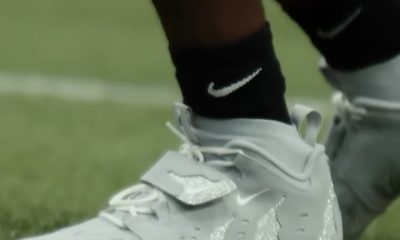
 Fashion3 weeks ago
Fashion3 weeks agoThis is poetry in motion.
-

 Rec Sports3 weeks ago
Rec Sports3 weeks agoDeputies investigating incident that caused panic at Pace youth sports complex
-

 NIL3 weeks ago
NIL3 weeks agoSave Like a Pro: NIL money isn’t free cash—taxes take a bite! Set aside part of …
-

 Sports3 weeks ago
Sports3 weeks agoHow to watch Yahoo Sports' NFL Draft Live show
-

 College Sports2 weeks ago
College Sports2 weeks agoDuke basketball's Isaiah Evans on 2025 NBA Draft early entry list
-

 Fashion3 weeks ago
Fashion3 weeks agohas always dreamed in Mercurial. Now his initials are on the boots. The new Kyl…
-

 Fashion2 weeks ago
Fashion2 weeks agoHow to watch Avalanche vs. Stars Game 7 FREE stream today
-

 High School Sports5 days ago
High School Sports5 days agoWeb exclusive
-

 Sports5 days ago
Sports5 days agoPrinceton University
-

 Sports5 days ago
Sports5 days ago2025 NCAA softball bracket: Women’s College World Series scores, schedule







 | First Take
| First Take














